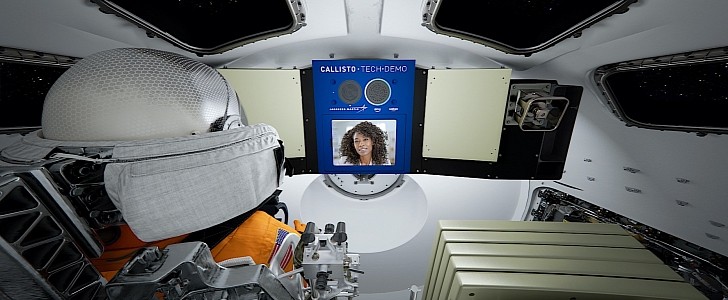For a while now voice assistants have been among us, and although so far they have failed in completely reshaping our society, the potential is there for some really incredible advancements to be achieved in various fields. Knowing this, NASA is allowing something never before attempted on space missions.
As most of you already know by now, the Artemis I mission to the Moon will depart sometime over the next few months, putting both the Space Launch System rocket and the Orion capsule through their first true tests. But they will not be the only ones being put through their paces.
The company in charge of designing and assembling the Orion, Lockheed Martin, announced this week the capsule would take with it in its mission to circle the Moon both the Amazon Alexa and Webex by Cisco. Both systems, one designed as a virtual audio assistant and the other as a video communications tool, are incorporated into something called Callisto.
According to Lockheed Martin, that would be a platform made to demonstrate “commercial technology for deep space voice, video and whiteboarding communications.” It comprises a custom hardware and software integration developed together by people from the three companies and should allow Alexa “to work without an internet connection, and Webex to run on a tablet using NASA's Deep Space Network.”
Now, Artemis I is uncrewed, and that means talking through Callisto to someone on board is impossible. To overcome this minor inconvenience, NASA built a virtual crew experience to allow humans to interact with the system.
As usual with most of the things it recently did, NASA will make a spectacle of the deployment of this technology as well, as it plans to “allow students, families, space enthusiasts and the general public to engage with and virtually ride along with the Artemis I mission.” Details on that are at the moment not known.
The company in charge of designing and assembling the Orion, Lockheed Martin, announced this week the capsule would take with it in its mission to circle the Moon both the Amazon Alexa and Webex by Cisco. Both systems, one designed as a virtual audio assistant and the other as a video communications tool, are incorporated into something called Callisto.
According to Lockheed Martin, that would be a platform made to demonstrate “commercial technology for deep space voice, video and whiteboarding communications.” It comprises a custom hardware and software integration developed together by people from the three companies and should allow Alexa “to work without an internet connection, and Webex to run on a tablet using NASA's Deep Space Network.”
Now, Artemis I is uncrewed, and that means talking through Callisto to someone on board is impossible. To overcome this minor inconvenience, NASA built a virtual crew experience to allow humans to interact with the system.
As usual with most of the things it recently did, NASA will make a spectacle of the deployment of this technology as well, as it plans to “allow students, families, space enthusiasts and the general public to engage with and virtually ride along with the Artemis I mission.” Details on that are at the moment not known.


















